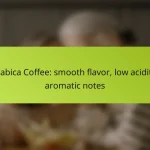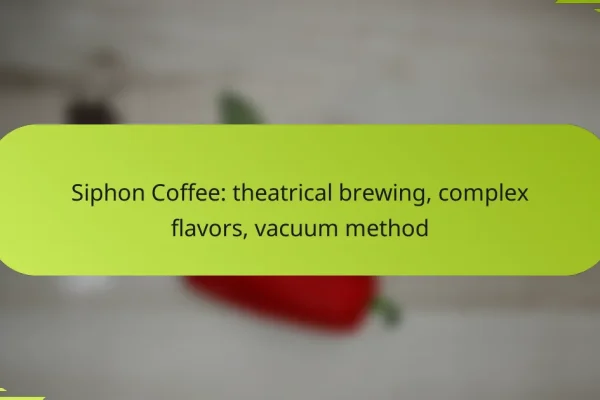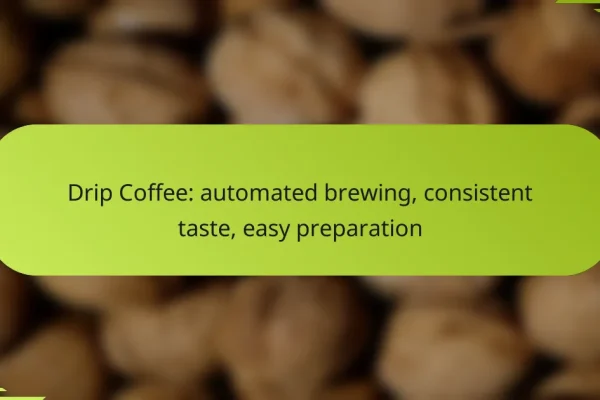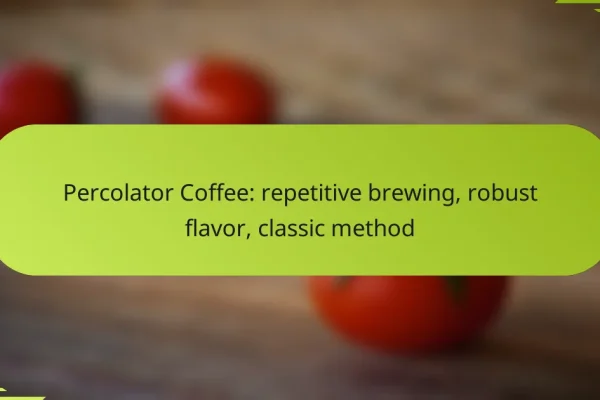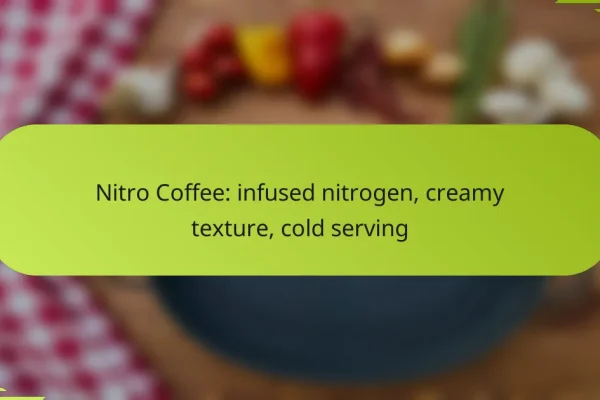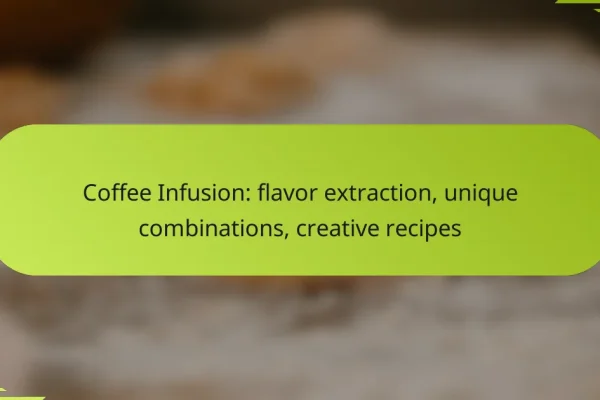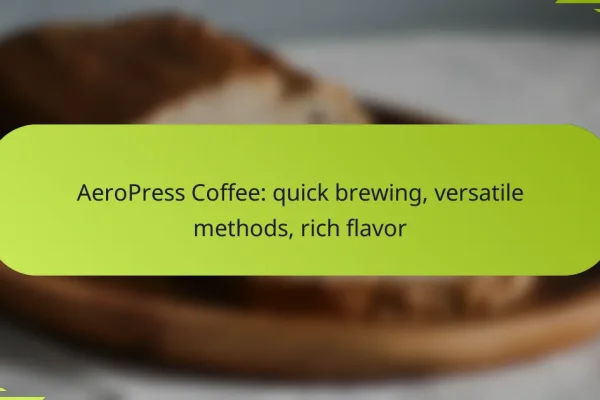How does the brewing process affect coffee flavor?
The brewing process significantly influences the flavor profile of coffee, impacting its aroma, acidity, body, and overall taste. Factors such as extraction time, water temperature, grind size, and brewing method all play crucial roles in determining the final flavor of the cup.
Extraction time
Extraction time refers to the duration that water is in contact with coffee grounds during brewing. A shorter extraction time can lead to under-extraction, resulting in a sour taste, while a longer time may cause over-extraction, producing bitterness. Generally, optimal extraction times range from 2 to 5 minutes, depending on the brewing method.
For instance, espresso typically requires about 25 to 30 seconds, while French press brewing may take around 4 minutes. Adjusting the extraction time can help achieve a balanced flavor profile tailored to individual preferences.
Water temperature
Water temperature is critical for proper extraction of coffee flavors. Ideal brewing temperatures usually fall between 90°C to 96°C (194°F to 205°F). Water that is too hot can extract undesirable bitter compounds, while water that is too cool may not extract enough flavor, leading to a weak brew.
Using a thermometer can help ensure the water is at the right temperature. If you don’t have one, a good rule of thumb is to bring water to a boil and let it sit for about 30 seconds before pouring it over the coffee grounds.
Grind size
Grind size affects the surface area of the coffee grounds, which in turn influences extraction. Finer grinds increase surface area, allowing for quicker extraction, while coarser grinds slow it down. For example, espresso requires a fine grind, whereas a French press needs a coarse grind to avoid over-extraction.
Experimenting with grind size can help you find the perfect balance for your preferred brewing method. A good starting point is to adjust the grind in small increments to see how it affects flavor.
Brewing method
The brewing method chosen can dramatically alter the flavor of the coffee. Methods like pour-over, French press, and espresso each have unique characteristics that influence extraction and taste. For instance, pour-over tends to produce a clean and bright cup, while French press offers a fuller body due to the immersion brewing process.
When selecting a brewing method, consider the flavor profile you desire. Each method may require adjustments in extraction time, water temperature, and grind size to achieve the best results. Experimenting with different methods can help you discover your favorite flavor nuances.
What are the best brewing methods for different coffee varieties?
The best brewing methods vary based on the coffee variety, enhancing the unique flavors and characteristics of each type. Understanding how to brew Arabica, Robusta, and blends can significantly improve your coffee experience.
Pour-over for Arabica
Pour-over is an excellent method for brewing Arabica coffee, known for its delicate flavors and aromatic qualities. This technique allows for precise control over water temperature and flow rate, which helps to extract the nuanced flavors of Arabica beans.
To brew, use a medium grind and heat water to around 90-96°C (195-205°F). Pour slowly in a circular motion to saturate the grounds evenly. Aim for a brew time of about 3-4 minutes for optimal extraction.
Common pitfalls include using water that is too hot or brewing for too long, which can lead to bitterness. Always use fresh, filtered water for the best results.
French press for Robusta
The French press is ideal for brewing Robusta coffee, which has a stronger, bolder flavor profile. This method enhances the coffee’s body and richness, making it a popular choice for those who enjoy a robust cup.
For French press brewing, coarsely grind the Robusta beans and use a coffee-to-water ratio of about 1:15. Steep for 4-5 minutes before pressing down the plunger. This method captures the oils and sediment, contributing to a fuller taste.
Avoid over-extraction by not steeping for too long, as this can lead to an overly bitter brew. Ensure the coffee is freshly ground for the best flavor.
Espresso for blends
Espresso is the preferred method for brewing coffee blends, as it highlights the complexity and balance of different beans. This concentrated brewing method extracts rich flavors and aromas in a short time.
Use a fine grind for the coffee blend and aim for a brewing time of 25-30 seconds with water heated to around 90-95°C (194-203°F). A standard espresso shot uses about 18-20 grams of coffee for a double shot.
Be cautious with the tamping pressure; too much can lead to over-extraction, while too little can result in under-extraction. Regularly clean your espresso machine to maintain flavor integrity.
What equipment is needed for brewing coffee?
Brewing coffee requires a few essential pieces of equipment that can significantly affect the flavor and quality of the final cup. Key items include a coffee grinder, brewing devices, and tools for ensuring water quality.
Coffee grinder
A coffee grinder is crucial for achieving the right grind size, which influences extraction and flavor. Burr grinders are preferred over blade grinders because they provide a more consistent grind, allowing for better control over the brewing process.
When selecting a grinder, consider the type of coffee you brew. For espresso, a fine grind is necessary, while a coarser grind works better for methods like French press. Investing in a quality grinder can enhance your coffee experience significantly.
Brewing devices
Brewing devices vary widely, from simple pour-over setups to complex espresso machines. Each method has its own characteristics and can produce different flavor profiles. Common brewing methods include drip coffee makers, French presses, pour-over, and espresso machines.
When choosing a brewing device, consider factors such as ease of use, maintenance, and the type of coffee you enjoy. For instance, a French press is great for full-bodied coffee, while an espresso machine is ideal for concentrated shots.
Water quality tools
Water quality is often overlooked but is essential for brewing great coffee. The ideal water should be clean, free of impurities, and have a balanced mineral content. Tools like water filters or testing kits can help ensure your water meets these standards.
Using filtered water can improve taste and prevent mineral buildup in your equipment. Aim for water with a pH level between 6.5 and 7.5 for optimal extraction. Regularly check and maintain your water source to enhance your coffee brewing experience.
What are the key factors in selecting coffee beans?
When selecting coffee beans, key factors include the origin, processing method, and roast level. Each of these elements significantly influences the flavor profile and quality of the coffee.
Origin
The origin of coffee beans refers to the geographical location where they are grown. Different regions produce beans with distinct flavor characteristics; for example, Ethiopian coffees are often fruity and floral, while Colombian varieties tend to be balanced and nutty.
When choosing coffee, consider the specific region’s climate and soil conditions, as these can affect the bean’s taste. Look for beans labeled with their origin to ensure authenticity and quality.
Processing method
The processing method describes how coffee cherries are transformed into green coffee beans. Common methods include washed, natural, and honey processing, each imparting unique flavors to the final brew.
For instance, washed coffees typically have a cleaner taste, while natural processed beans can exhibit fruity and complex flavors. Understanding these methods can help you select beans that align with your flavor preferences.
Roast level
The roast level indicates how long and at what temperature the beans have been roasted, affecting their flavor and aroma. Common roast levels range from light to dark, with light roasts retaining more acidity and original bean characteristics, while dark roasts offer a bolder, more robust flavor.
When selecting coffee, consider your taste preference for roast levels. Experimenting with different roasts can help you discover your ideal flavor profile, whether you enjoy bright and fruity or rich and chocolatey notes.
How do brewing techniques vary by region?
Brewing techniques for coffee differ significantly across regions, influenced by local culture, available resources, and taste preferences. Each method highlights unique flavors and characteristics of the coffee beans used, creating distinct experiences for coffee drinkers.
Italian espresso
Italian espresso is a concentrated coffee brewed by forcing hot water through finely-ground coffee beans. This method typically uses a pressure of around 9 bars, resulting in a rich, bold flavor with a creamy layer of crema on top.
To make a traditional Italian espresso, use a high-quality coffee blend, finely grind the beans, and tamp them firmly in the portafilter. Brew for about 25-30 seconds to achieve the ideal extraction time, which enhances the coffee’s natural sweetness and complexity.
Common pitfalls include using stale coffee or incorrect grind size, which can lead to over-extraction or under-extraction. For the best results, aim for a coffee-to-water ratio of about 1:2, adjusting based on personal taste preferences.

